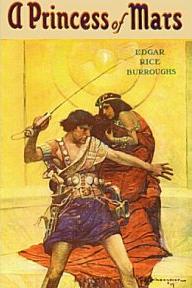This is my 5th “Civil War book” completed this year. For those who don’t already know, it’s the story of a young soldier (Yankee) and how he deals with “the horrors of war.” In the early part of the book, the ‘action’ is primarily comprised of the young soldier’s (Henry Fleming) anxiety regarding what kind of soldier he will be when the battle lines are drawn and he finally sees action. There is a lot of dread, as he fears his true nature is not heroic, but leaning more toward cowardly. In his first engagement, his regiment repels a half-hearted rebel charge, leading to a premature celebration of victory, during which the real charge occurs. Seeing a few of his comrades take flight, Henry (or ‘the youth’ as he is most often referred to in the narration) assumes the battle is lost and joins them. Later he finds out the battle was won and he is ashamed of his actions. He hesitates rejoining his regiment due to this shame, and during his separation, gazes upon many other horrors of war. The dead, the dying, the maimed. He eventually finds his way back to the regiment, fearing he will be mocked for running, but nobody realizes he did anything other than ‘I got separated.’ By this time, he has also incurred a non-combat wound to his head, which resembles a grazing shot from a confederate bullet. This seems to verify his non-coward ‘status’ with his unit. His brave actions in later engagements cement his reputation.
His rationalization of his initial flight is deftly described in chapter 7:
“Thoughts of his comrades came to him. The brittle blue line had withstood the blows and won. He grew bitter over it. It seemed that the blind ignorance and stupidity of those little pieces had betrayed him. He had been overturned and crushed by their lack of sense in holding the position, when intelligent deliberation would have convinced them that it was impossible. He, the enlightened man who looks afar in the dark, had fled because of his superior perceptions and knowledge. He felt a great anger against his comrades. He knew it could be proved that they had been fools.”

One gets the sense of the overall confusion during a battle of that era. Every time they think they’ve “won” something else comes up, or if they repel an advance, another won shortly follows. At one point we find his unit facing the enemy forming for another attack “in the pitiless monotony of conflicts.” In one episode he overhears officers discussing plans and that they think of his regiment as a bunch of “mule-drivers” which, from his perspective – having fought like a man possessed in the last engagement – is untrue and insulting. This fuels his aggression in later fights. It is notable that his impetus for fighting has nothing to do with the war’s causes or politics, he is just simply “there.” At one point, the flag of his unit becomes a rallying point (perhaps this is why armies of that era marched – and fought – with flags prominently displayed).
From chapter 19:
“Within him, as he hurled himself forward, was born a love, a despairing fondness for this flag which was near him. It was a creation of beauty and invulnerability. It was a goddess, radiant, that bended its form with an imperious gesture to him. It was a woman, red and white, hating and loving, that called him with the voice of his hopes. Because no harm could come to it he endowed it with power. He kept near, as if it could be a saver of lives, and an imploring cry went from his mind.”
Stephen Crane:

The novel is said to be more or less set during the Battle of Chancellorsville, although this is never stated in the text. It’s also very short (130 pages in my version), but there is so much in the way of description of war and its horrors, that I found it exhausting nonetheless.
The poem “Keenan’s Charge” by George Parsons Lathrop (read here) describes a charge from the Battle of Chancellorsville which is supposed to be the basis for Chapter 23 of The Red Badge of Courage.
All in all, an interesting read, and an iconic novel in American Literature. This book is available in the public domain and I read parts of it on my “Free Books” app on my iPhone. I’ve also read (long ago) a short story by Stephen Crane (“The Monster”), and I think in college we read (at least) passages of another novel of his, Maggie: A Girl of the Streets. Perhaps I will revisit those…
I was also reminded while reading of a favorite quotation – I think it was Winston Churchill who uttered the witticism “There is nothing in life as exhilarating as having been shot at without result.” I think the characters in this novel would truly appreciate that one.







